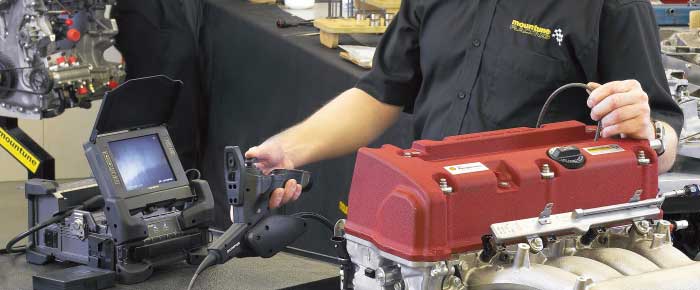
Background
The modern day automobile, with its internal combustion engine, includes as many as 80 to 100 hoses to move fluids and air to enable operation and comfort for the driver and passengers. These hoses deliver fluids including fuel, oil, hydraulic fluid, coolant, water and washer fluid, as well as gases, fresh air and exhaust, within the respective systems.
As the fluids vary, so too, the hoses vary, made of different materials, including metal, rubber, and plastic based on the respective usage. The table below lists a number of typical hoses.
| Material | Structure | Usage | Feature |
| Metal | Metal tube | Brake oil, Radiator, etc. | The high temperature and high pressure conditions are involved. |
| Rubber | Single layer, Multi-layer | Fuel, Window washer liquid, etc. | The condition where flexibility is required. |
| Plastic | Irregular shape | Air conditioner, etc. | Light weight and large outer diameter, special shape, etc. |
The Challenge
Hoses within the automobile are designed to withstand wear and tear under normal operating conditions. For example, hoses that deliver fluid to the brakes and recirculate coolant to the radiator must resist excessive heat and pressure to maintain normal operation of the vehicle. Hoses that circulate water to the air conditioner and throughout the automobile need barrier and vibrational absorption properties. Hoses that deliver fuel and window washer liquid need flexibility and durability to deliver fluids through a tangled route. Hose integrity is important for ongoing operation of the automobile. Internal/inner surface inspections for defects and quality control are essential. Industrial videoscopes inspect for defects, including rust, cracks, and shape defects.
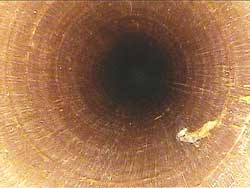 [Inside of a high pressure hose] | 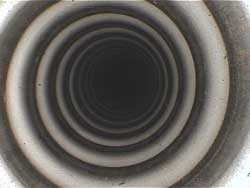 [Inner coating of bellows hose] |
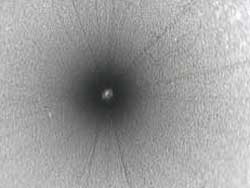 [Inside of a metal hose] | 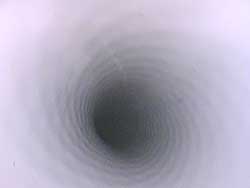 [Inside of a plastic hose] |
The Olympus solution
Hoses within the automobile are designed with a variety of shapes and sizes based on the specific use. Olympus’ line of videoscopes includes different sized insertion tubes to easily penetrate and inspect the internal structure of each hose in the automobile. The outer diameter of the insertion tube varies from 2.4 mm to as large as 8.5 mm. Olympus videoscopes detect even the smallest defects with bright and high resolution images. The high resolution images are resolved using advanced lensing systems to assure the best fidelity, with distortion free images and natural color reproduction. In addition, Olympus videoscopes can use the built-in zoom function to enlarge the image for post inspection analysis.
Olympus videoscopes, with TrueFeel Articulation, provide the inspector with exceptional control to assure the scope follows the path of the hose even when it passes through complex shapes or manifolds to precisely face the target and image any defects.
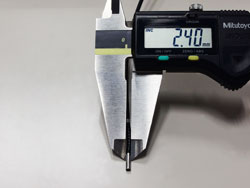 [2.4 mm outer diameter] | 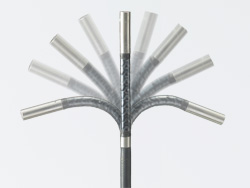 [Tip articulation of IPLEX TX] |
Conclusion
Based on IP55 regulations compliance, excellent durability, and operability, Olympus industrial videoscopes are widely used by automobile and components manufacturers worldwide for their field inspections of automobile hoses.
For details on which Olympus videoscope is right for your application, contact your local sales representative.

